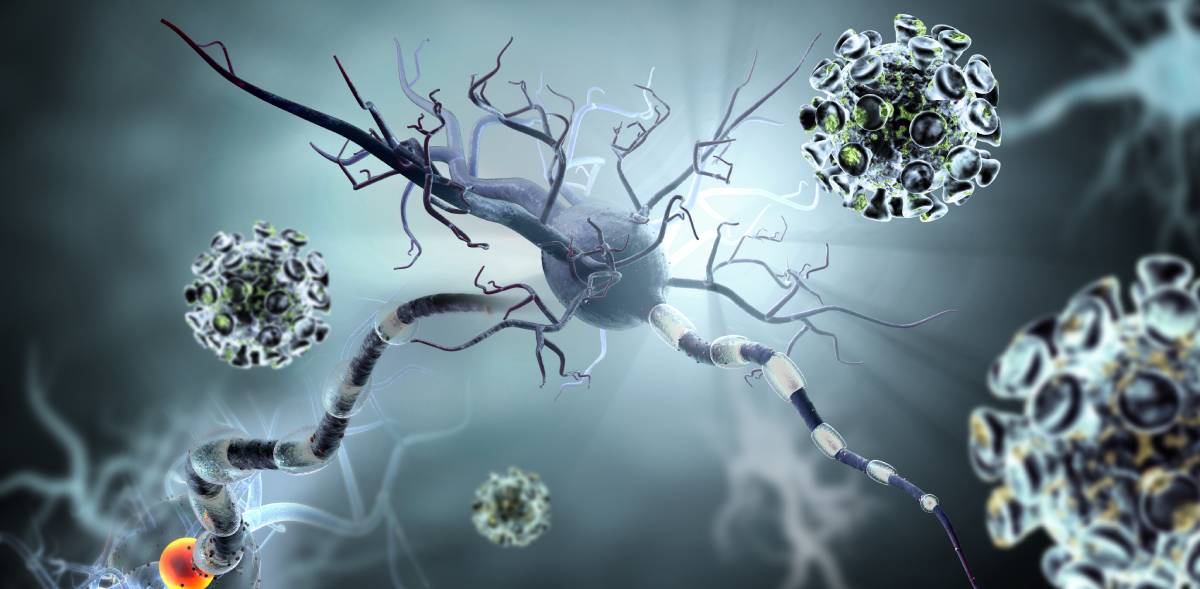Neurological Symptoms of COVID-19

Though COVID-19 is known for the respiratory symptoms it elicits in most symptomatic cases, it also causes neurological symptoms in a minority of cases. These neurological symptoms can range from minor and short-lived to serious, and they have emerged in infected individuals at varying levels with regard to age and comorbidities. Researchers have sought both to treat respiratory symptoms as a means of reducing neurological ones and to determine whether infection of the nervous system causes symptoms in COVID-19 patients.
In a survey of hospitalized COVID-19 patients in New York, one in seven reported neurological symptoms [1]. Another study of patients in Wuhan, China, however, concluded that 36.4% experienced them [2]. Neurological symptoms usually developed within two days of other symptoms appearing [3]. At their most innocuous, patients experienced headache, dizziness, and confusion, but certain patients have experienced strokes and seizures. Furthermore, some have speculated that the loss of olfactory sensation common in COVID-19 patients may have neurological causes [4].
Just as older patients tend to have higher COVID-19 death rates, they are also more likely to suffer from serious neurological dysfunction as a result of the virus: one study found the median age of hospitalized patients with neurological symptoms to be 71, a full 7 years older than those without neurological symptoms [3]. Those with comorbidities, including but not limited to prior neurological problems, were also more likely to experience them during COVID-19 infection. For instance, 19% of those with neurological symptoms had a history of ischemic stroke, compared to 7% without [3]. However though race has been correlated with COVID-19 deaths in the U.S., it does not appear to be correlated with rates of neurological symptoms.
In many cases, respiratory infection is likely the cause of these symptoms. Low blood oxygen levels, for instance, can cause the feelings of confusion common in COVID-19 patients [1]. Indeed, symptoms such as headache and dizziness are common across viral infections and may reveal little about COVID-19 specifically [4]. Thus, researchers have suggested that treating respiratory symptoms and raising blood oxygen levels is the most reliable way to reduce the threat of neurological damage [3].
However, more research is needed on the topic of whether COVID-19 can directly infect the nervous system. Pezzini and Padovani describe three potential routes by which the virus may create neurological effects: as an effect of pulmonary disease and other systems’ breakdown, as a direct effect of central nervous system infection, or as a result of post-infection complications [5]. There have been scattered reports of encephalitis, including in a previously healthy 11-year-old, but it remains unclear whether nervous system infection is responsible for these cases [4,6]. Meanwhile, as Butowt et al. note, some have theorized that the loss of smell experienced by many COVID-19 patients may come about as a result of the virus destroying olfactory neurons, or else due to the virus infecting olfactory centers in the brain, possibly via the nose. However, they argue that these symptoms are more likely to be caused by the virus destroying sustentacular cells in the olfactory epithelium [7].
Though most COVID-19 cases do not involve neurological symptoms, a significant number do, usually in patients with already-serious cases. These symptoms are generally linked to respiratory infection, though some researchers posit that nervous system infection may play a role in effects such as anosmia.
References
[1] “COVID-19 Frequently Causes Neurological Injuries.” NYU Langone News, NYU Langone Health, 2020, nyulangone.org/news/covid-19-frequently-causes-neurological-injuries.
[2] Mao, Ling, et al. “Neurological Manifestations of Hospitalized Patients with COVID-19 in Wuhan, China: a Retrospective Case Series Study.” Medrxiv, 25 Feb. 2020, doi:10.1101/2020.02.22.20026500.
[3] Frontera, Jennifer A., et al. “A Prospective Study of Neurologic Disorders in Hospitalized COVID-19 Patients in New York City.” Neurology, 5 Oct. 2020, doi:10.1212/wnl.0000000000010979.
[4] Chen, Xiangliang, et al. “A Systematic Review of Neurological Symptoms and Complications of COVID-19.” Journal of Neurology, 2020, doi:10.1007/s00415-020-10067-3.
[5] Pezzini, Alessandro, and Alessandro Padovani. “Lifting the Mask on Neurological Manifestations of COVID-19.” Nature Reviews Neurology, vol. 16, no. 11, 24 Aug. 2020, pp. 636–644., doi:10.1038/s41582-020-0398-3.
[6] Mcabee, Gary N., et al. “Encephalitis Associated with COVID-19 Infection in an 11-Year-Old Child.” Pediatric Neurology, vol. 109, 24 Apr. 2020, p. 94., doi:10.1016/j.pediatrneurol.2020.04.013.
[7] Butowt, Rafal, and Christopher S von Bartheld. “Anosmia in COVID-19: Underlying Mechanisms and Assessment of an Olfactory Route to Brain Infection.” The Neuroscientist. 11 Sep. 2020, doi:10.1177/1073858420956905.